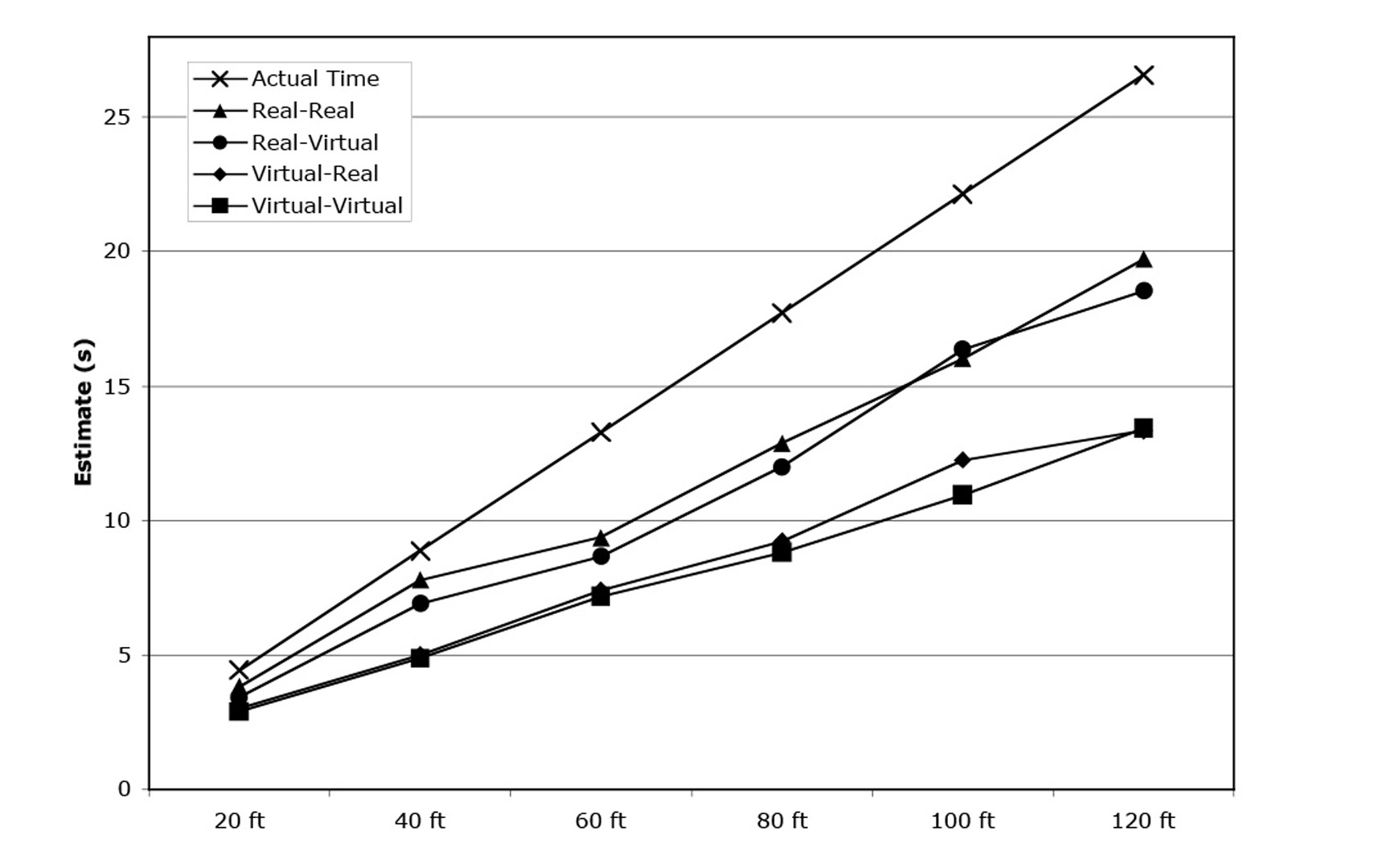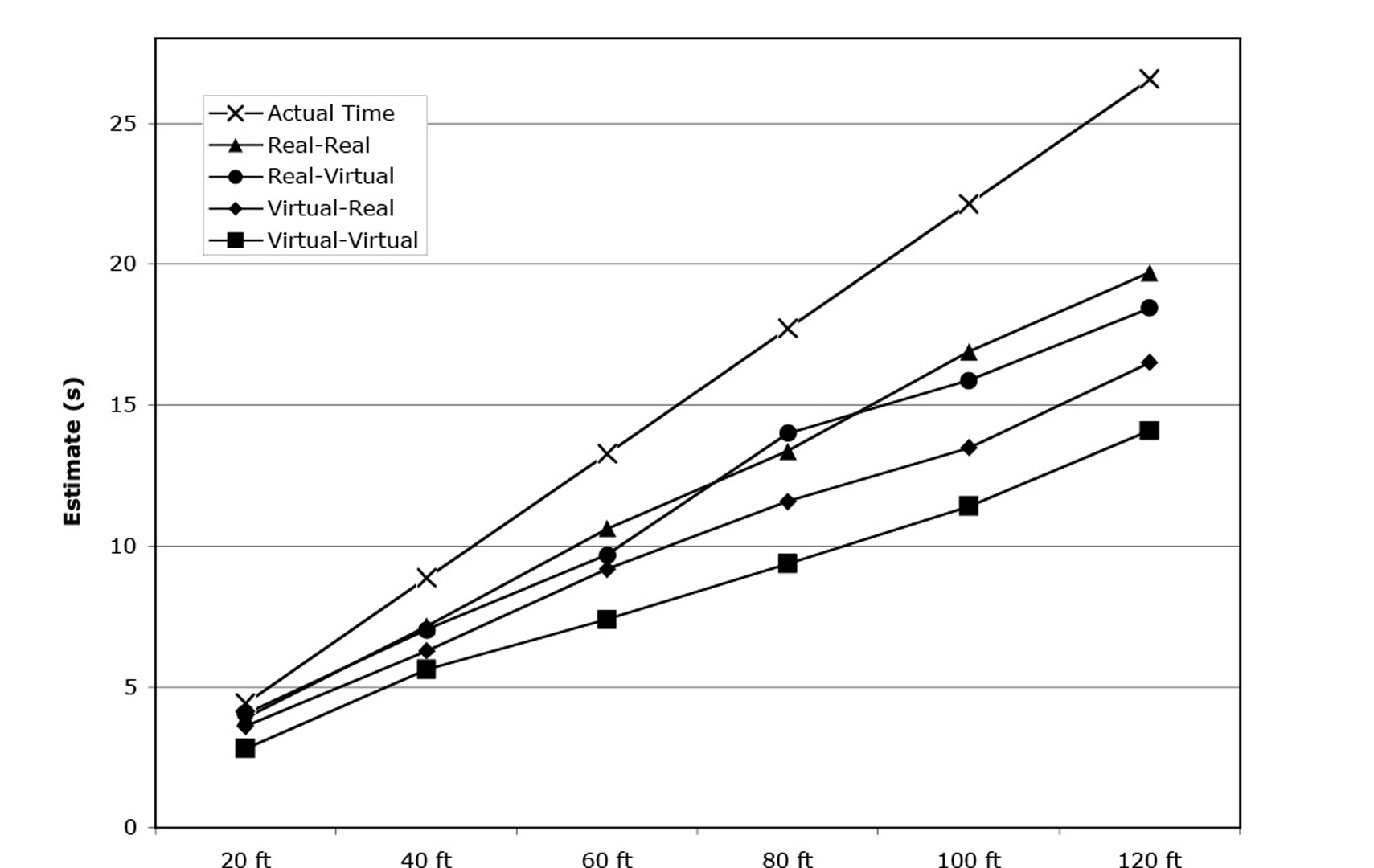“Making distance judgments in real and virtual environments: does order make a difference?” by Ziemer, Plumert, Cremer and Kearney
Conference:
Type(s):
Title:
- Making distance judgments in real and virtual environments: does order make a difference?
Presenter(s)/Author(s):
Abstract:
Virtual environments are an exciting new medium for?investigating difficult-to-study problems under realistic and?controlled conditions (Plumert, Kearney, & Cremer, 2004). One?question that arises when using virtual environments to study?human behavior is how well does distance perception in real and?virtual environments correspond? Recently, Plumert, Kearney,?Cremer, and Recker (2005) asked people to estimate how long it?would take to walk to targets in real and virtual environments by?starting and stopping a stopwatch while imagining walking to a?target person standing between 20 and 120 ft. away. The real?environment was a large grassy lawn in front of a university?building. This scene was replicated in a virtual environment using?a nonstereoscopic, large-screen immersive display system.?Participants made estimates either in the real or virtual?environment first. Time-to-walk estimates did not differ across?environments when people made estimates in the real?environment first. When people made estimates in the virtual?environment first, however, estimates were significantly shorter in?the virtual than in the real environment.
References:
1. Plumert, J. M., Kearney, J. K., and Cremer, J. F. 2004. Children’s perception of gap affordances: Bicycling across traffic-filled intersections in an immersive virtual environment. Child Development 75, 4, 1243–1253.
2. Plumert, J. M., Kearney, J. K., Cremer, J. F., and Recker, K. 2005. Distance perception in real and virtual environments. ACM Trans. Appl. Percept. 2, 3, 216–233.






